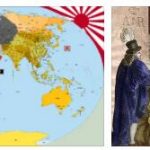Cromwell’s rule was based only on his personality and collapsed after his death (9/3/1658). His son Richard Cromwell, who succeeded him in the office of “Lord Protector” (September 3, 1658– May 25, 1659), as well as Parliament, proved unable to cope with the situation. The cost of the army and warfare had ruined state finances, and when the army split into rival factions, the restoration of the monarchy could no longer be stopped. The reconvened “Long Parliament” called back the son of the executed king from exile, who was known as Charles II. (1660–85) ascended the English throne. But the parliament also maintained its position when it decided at the same time to return to the general legal status of 1641, that is, before the outbreak of the civil war, and thus its political participation remained indispensable.
However, a real counter-revolution took place in the area of religion. In place of tolerance and religious diversity, there was again the monopoly of the Anglican state church (Clarendon Code, 1661/65), which was now rigorously enforced against the Puritan dissenters. According to Shopareview, the test act passed by parliament in 1673 tied the exercise of every public office to an open commitment to the state church; those of a different faith remained second-class citizens. This confessional restoration led to renewed conflicts between the crown and parliament, since Charles II., who personally leaned towards Catholicism, repeatedly tried to assure dissenters and Catholics freedom of conscience. Since the king was also in close alliance with the Catholic France of Louis XIV, the country seemed to be on the brink of civil war again between 1678 and 1681 when the growing opposition in parliament (Whigs) dismissed the Catholic brother of the childless king demanded from the line of succession. But this time the king was not without an appendix (Tories), dissolved parliament three times and finally ruled without a parliament until his death. When the Catholic James II. (1685–88) succeeded the throne and a Tory parliament was loyal to him, the establishment of monarchical absolutism in England now seemed inevitable. But Jacob II’s absolutist arbitrary regiment alienated him even from the Tories. When the birth of a son seemed to secure the Catholic dynasty, leading Whigs and Tories turned to the consort of his eldest daughter Mary, the Protestant inheritance holder of the Netherlands, William of Orange, to stand up for the traditional constitution. He landed in England on November 5, 1688, and since all political forces turned to him, James II only had to flee to France, where he died in 1701.
William III. (1689–1702) and Maria II (1689 to 1694), who ruled together, signed the Bill of Rights, which from then on was respected as a constitution, after their accession to the throne. The Act of Tolerance, also issued in 1689, guaranteed the Dissenters religious freedom. That was the bloodlessly run »Glorious Revolution« of 1688 (Glorious Revolution) closed. Political power remained in the hands of the high nobility and the gentry, who, however, did not shut themselves off in a system of relatively high social mobility vis-à-vis the bourgeoisie in trade, commerce and finance. The revolution did not bring parliamentary sovereignty, because the king still had decisive prerogative rights (appointment of ministers, convocation and termination of parliamentary sessions, management of foreign policy, above all deciding on war and peace and the right to conclude alliances with foreign powers). The king ruled as “King in Parliament”, i. That is, the king and parliament were the two constitutional organs that determined political events. The question of the supreme, sovereign power in the state was by no means decided. It was only supposed to be in the course of the 18th and early 19th centuries. Century will definitely be answered in favor of Parliament through the development of state practice. So moderation and conservatism characterized the Glorious Revolution. The laws that were passed in its course were more likely to strengthen the old order than to overturn it from the ground up. From now on, however, the expansion of the cabinet system, the struggle for parliamentary reform and the struggle to expand the right to vote dominated the domestic political discussion in England.
William III. , which also prevailed in Scotland and Ireland, remained closely connected to the mainland’s political system as governor-general of the Netherlands. He led England back into the European disputes, in which barriers were now to be placed on the expansion of France. The principle of English politics was the preservation of the balance of power. England and the Netherlands therefore took part with the Emperor, Spain, Savoy and several imperial princes in the Great Alliance against Louis XIV, who was in his third war of conquest (1688-97) . In 1692, the English fleet defeated the French enemy in the naval battle of La Hogue. At the beginning of the War of the Spanish Succession (1701–13 / 14) forged Wilhelm III.shortly before his death the second great alliance with the emperor and the empire, Prussia, Hanover, Portugal and Savoy. But despite the brilliant victories of the English general, the Duke of Marlborough, England left the war after a change of power from the Whigs to the Tories in 1711. In the Treaty of Utrecht (1713) it was given Gibraltar and Menorca as well as Newfoundland and areas on the Canadian east coast as well as the monopoly of the slave trade with Spanish South America (Asiento).
His sister-in-law Anna (1702–14) succeeded the last king, who ruled alone. Because the Catholic male line of the deposed Jacob II was excluded from the succession by the Act of Settlement (1701), the Welfs in Hanover (as descendants of Elisabeth, daughter of Jacob I, married to Frederick V of the Palatinate) became aspirants to the throne. The personal union between England and Scotland, which had existed since 1603, was consolidated in 1707 by the union of the Scottish and English parliaments to form the Realunion (new country name: Great Britain).








